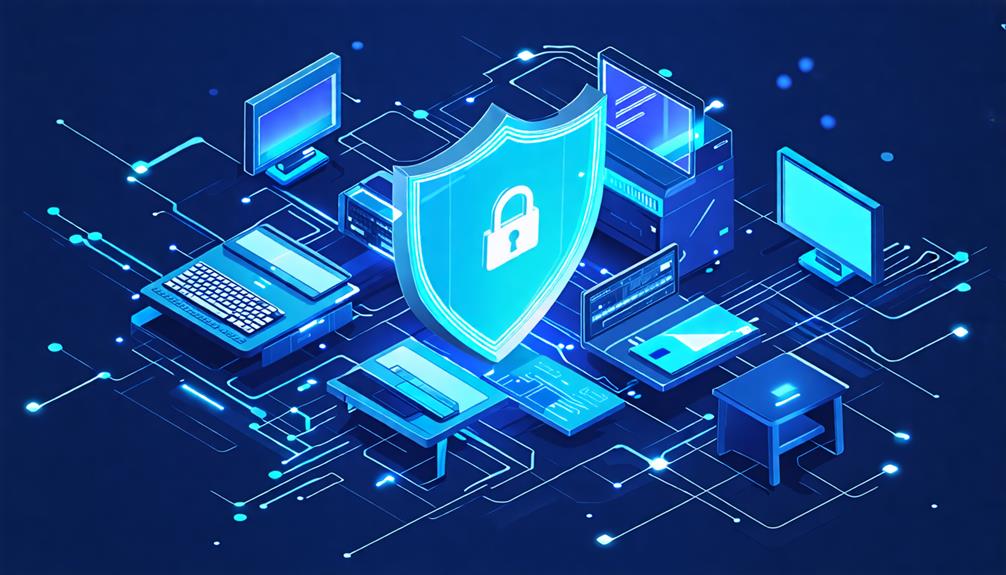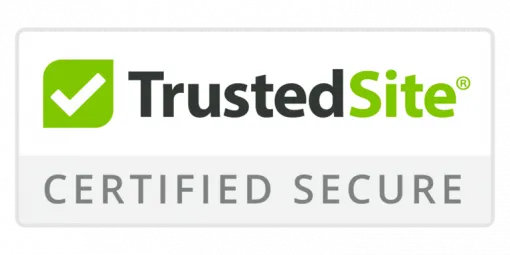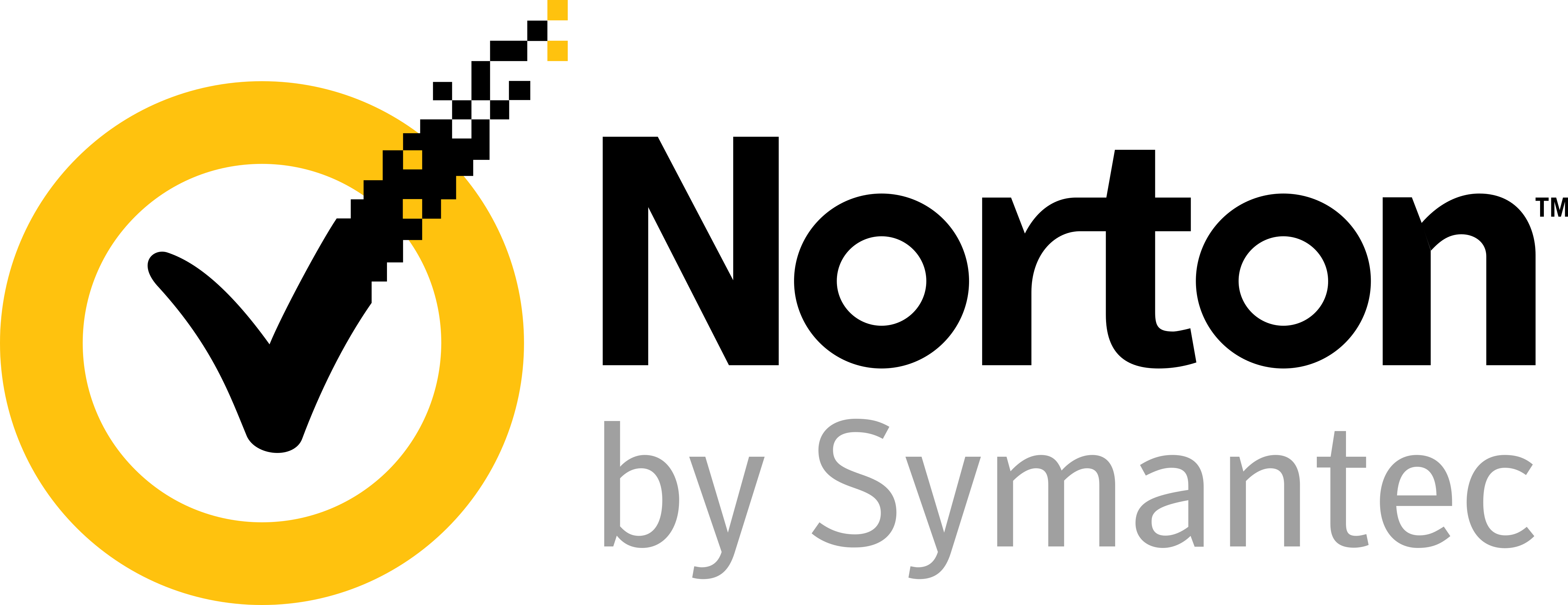Implementing network security solutions might seem like an undertaking only large corporations can manage, but that's far from the truth. As a small to medium-sized enterprise (SME), you encounter many of the same cyber threats that larger companies face, albeit with more limited resources to tackle them. However, neglecting network security can lead to severe consequences. By adopting the right security measures, you can protect your business and maintain customer trust. So, where should you begin, and which solutions will offer the best return on investment? Let's delve into how you can effectively implement network security solutions in your SME.
Understanding the Basics
First, it's essential to grasp the fundamental components of network security. These typically include firewalls, antivirus software, intrusion detection systems (IDS), and virtual private networks (VPNs). Firewalls act as a barrier between your internal network and external threats, while antivirus software protects against malware. IDS helps in identifying and responding to potential breaches, and VPNs ensure secure remote access.
Step-by-Step Implementation Guide
- Assess Your Current Security Posture:
- Conduct a thorough audit of your existing network infrastructure.
- Identify any vulnerabilities or outdated systems that could be exploited.
- Prioritize Your Needs:
- Determine which assets are most critical to your business operations.
- Focus on protecting these high-priority areas first.
- Choose the Right Solutions:
- Firewalls: Invest in a reputable firewall solution that can filter traffic and block unauthorized access.
- Antivirus Software: Ensure all devices connected to your network have up-to-date antivirus programs.
- Intrusion Detection Systems: Deploy IDS to monitor network traffic for suspicious activity.
- VPNs: Implement VPNs for secure remote access, especially if you have employees working from various locations.
- Employee Training:
- Educate your staff on the importance of network security.
- Conduct regular training sessions on recognizing phishing attempts and other cyber threats.
- Regular Updates and Maintenance:
- Keep all security software and systems updated.
- Regularly patch vulnerabilities and update firewalls and antivirus definitions.
- Develop a Response Plan:
- Create a clear action plan for responding to security incidents.
- Ensure all employees know their roles in the event of a breach.
Monitoring and Continuous Improvement
Network security is not a one-time task but an ongoing process. Regularly monitor your systems for new threats and continuously improve your defenses. Consider partnering with a managed security service provider (MSSP) if you need additional expertise and resources.
Conclusion
Implementing network security solutions in an SME might seem daunting, but with a structured approach, it is entirely feasible. By assessing your needs, prioritizing your assets, choosing the right solutions, and ensuring ongoing education and updates, you can effectively safeguard your business. Not only will this protect your data and operations, but it will also help maintain the trust of your customers, providing a significant return on investment.
Common Network Security Threats
Numerous network security threats pose significant risks to side hustles, including malware, phishing, ransomware, and denial-of-service (DoS) attacks. These threats can compromise your business's data, disrupt operations, and damage reputation.
You face phishing attacks that trick you into divulging sensitive information, while malware threats can spread through your systems, causing chaos. Distributed denial-of-service (DDoS) attacks can overwhelm your online resources, making them unavailable to customers. Insider threats are equally damaging, as individuals with malicious intentions can exploit their access to harm your business.
Additionally, you need to be aware of ransomware tactics that use encryption to hold your data hostage, demanding payment in exchange for the decryption key. Social engineering tactics, such as pretexting and baiting, can manipulate you or your collaborators into breaching security protocols. Zero-day exploits take advantage of previously unknown vulnerabilities in your systems, leaving you no time to react.
Importance of Network Security
Securing your network is essential for your side hustle because it safeguards your business's data and reputation, allowing you to maintain customer trust and avoid costly downtime and potential legal repercussions.
By implementing robust network security measures, you can reap numerous benefits, including protection against cyber threats, data breaches, and unauthorized access. Effective network security also guarantees the integrity and confidentiality of your data, which is critical for side hustles that handle sensitive customer information.
To achieve these network security benefits for your side hustle, you need to develop and implement thorough data protection strategies. This includes deploying firewalls, intrusion detection and prevention systems, and encryption technologies to safeguard your data.
You should also establish strict access controls, including multi-factor authentication, to prevent unauthorized access to your network and data. By prioritizing network security, you can guarantee the continuity of your side hustle operations, protect your reputation, and maintain the trust of your customers.
Assessing SME Security Risks
To effectively assess the security risks associated with your side hustle, you need to identify vulnerability gaps in your online presence and digital tools.
Conducting cyber threat assessments helps you determine the likelihood and potential impact of a security breach, allowing you to prioritize mitigation efforts.
Identifying Vulnerability Gaps
When evaluating the security posture of your side hustle, identifying vulnerability gaps is a crucial step that helps you understand where cyber threats can exploit weaknesses in your defenses. To do this, you'll need to conduct a thorough vulnerability assessment, which involves evaluating your systems, networks, and applications for potential vulnerabilities.
A gap analysis is an essential part of this process, as it helps you identify areas where your security controls are insufficient or lacking. By identifying these gaps, you can prioritize remediation efforts and allocate resources more effectively.
Here are some key areas to focus on when conducting a vulnerability assessment and gap analysis for your side hustle:
| Vulnerability Area | Gap Analysis Questions |
|---|---|
| Network Security | Are firewalls and intrusion detection/prevention systems in place? |
| Password Management | Are strong password policies enforced, and multi-factor authentication used? |
| Software Updates | Are software updates and patches regularly applied? |
| Data Encryption | Is sensitive data encrypted in transit and at rest? |
| User Education | Are you and any collaborators regularly trained on security best practices? |
Cyber Threat Assessments
Conducting a cyber threat assessment allows you to proactively evaluate the likelihood and potential impact of various threats on your side hustle's security posture, helping you pinpoint areas that require immediate attention and resource allocation.
You'll analyze the threat landscape to identify potential threats, such as malware, phishing, and Denial-of-Service (DoS) attacks, and assess their likelihood and potential impact on your side hustle's security.
This assessment will help you prioritize risk mitigation efforts, allocating resources to address the most critical vulnerabilities and threats.
By identifying and addressing these threats, you'll reduce the risk of security breaches, data loss, and system downtime, ultimately protecting your side hustle's reputation and bottom line.
A thorough cyber threat assessment will also help you evaluate the effectiveness of your existing security controls and identify areas where additional security measures are needed.
Security Risk Profiling
Your side hustle's security risk profile serves as a critical framework for identifying, evaluating, and prioritizing potential security risks, providing an extensive understanding of the threats that could compromise your business's assets, data, and operations.
By conducting a thorough risk analysis, you'll be able to pinpoint vulnerabilities in your systems, networks, and applications, and take proactive measures to mitigate them.
This process involves analyzing your side hustle's security posture, identifying potential risk factors, and evaluating the likelihood and potential impact of various threats. You'll also need to review your current security controls and determine whether they're sufficient to meet security compliance requirements.
The output of this exercise is a detailed security risk profile, which will help you make informed decisions about resource allocation, risk mitigation strategies, and security investments.
Creating a Security Policy
Developing a thorough security policy is a critical first step in establishing a robust security posture for your side hustle, as it outlines the guidelines and protocols that govern your overall security practices.
You'll want to create a detailed policy that addresses the unique security needs of your small business. To get started, you can draw from established security policy frameworks, such as NIST or ISO 27001, and tailor them to your specific requirements.
When implementing your security policy, consider the following key strategies:
- Clearly define roles and responsibilities: Ensure that you and any collaborators understand your security obligations and the consequences of non-compliance.
- Establish incident response procedures: Develop a plan for responding to security incidents, including containment, eradication, recovery, and post-incident activities.
- Implement security awareness training: Educate yourself and any team members on security best practices, phishing attacks, and data handling procedures.
Network Architecture Best Practices
A well-designed network architecture is essential for guaranteeing the security and integrity of your side hustle's data. It begins with segmenting your network into functional zones to limit the spread of malware and unauthorized access.
By implementing network segmentation strategies, you'll reduce the attack surface and prevent lateral movement in case of a breach. Start by isolating sensitive areas, such as payment data or customer information, from the rest of the network. Use Virtual Local Area Networks (VLANs) or physical separation to create these zones.
Next, establish secure communication protocols to guarantee secure data transmission between segments. Implement Transport Layer Security (TLS) or Secure Sockets Layer (SSL) encryption to protect data in transit. You should also use secure authentication and authorization mechanisms, such as RADIUS or Kerberos, to control access to each segment.
By doing so, you'll notably reduce the risk of unauthorized access and data breaches. Regularly review and update your network architecture to guarantee it remains effective and aligned with your side hustle's needs.
Firewall Configuration and Management
Building on a well-designed network architecture, you'll further strengthen your side hustle's security posture by configuring and managing firewalls to control incoming and outgoing network traffic, block unauthorized access, and prevent malicious activity.
Firewalls are a vital security layer, and choosing the right type is important for your side hustle. You'll need to decide between hardware, software, or virtual firewalls, each with its own strengths and weaknesses.
When configuring your firewall for your side hustle, keep the following best practices in mind:
- Set the default policy to deny all incoming and outgoing traffic, only allowing necessary connections.
- Use port address translation (PAT) to hide internal IP addresses from the public internet.
- Enable logging and monitoring to track suspicious activity and troubleshoot issues.
Implementing Intrusion Detection
As you implement intrusion detection in your side hustle's digital security setup, you'll need to take into account the different types of intrusion detection systems (IDS) available, including network-based and host-based systems.
You'll also need to set up system alerts that notify you of potential intrusions, allowing for swift action.
Types of Intrusion Detection
When considering side hustles, it's essential to understand the types of intrusion detection that could safeguard your online business. There are two primary types: network-based intrusion detection systems (NIDS) and host-based intrusion detection systems (HIDS). NIDS monitor network traffic to detect and prevent unauthorized access, while HIDS focus on individual hosts or devices.
Both NIDS and HIDS use two main detection methods: signature-based detection and anomaly-based detection. Signature-based detection identifies known malicious patterns, while anomaly-based detection flags unusual activity that doesn't match normal behavior.
Here are some key aspects of NIDS and HIDS relevant to your side hustle:
- NIDS can be more cost-effective and easier to implement, making them suitable for small online businesses that need to monitor web traffic without significant investment.
- HIDS can offer more granular control and visibility into host activity, which is beneficial for side hustles involving sensitive data or frequent software updates, though they may require more resources and management.
- NIDS are typically more effective against network-level attacks, such as denial-of-service (DoS) attacks, which can be devastating for any online side business.
Understanding these systems can help you choose the right security measures to protect your side hustle from potential cyber threats.
Setting Up System Alerts
To effectively manage and grow your side hustle, you must set up system alerts that notify you of key activities and milestones in real-time, enabling you to take swift action.
You'll need to configure alert thresholds to define what constitutes a significant event, taking into account factors such as sales patterns, customer behavior, and inventory levels. This ensures that alerts are triggered only when important activities occur, reducing unnecessary notifications and alert fatigue.
You should also implement notification systems that can send alerts to you or your team members. These notifications can be sent via email, SMS, or other communication channels, depending on the importance of the alert and your communication preferences.
The notification system should provide detailed information about the alert, including the type of event, the affected product or service, and any relevant data or evidence.
Incident Response Planning
Your side hustle's security strategy should prioritize implementing an intrusion detection system (IDS) that continuously monitors your network for signs of unauthorized access, misuse, or other malicious activities. This system will alert you to potential threats, allowing you to take swift action and minimize damage.
When implementing an IDS for your side hustle, consider the following key factors:
- Network visibility: Confirm your IDS has visibility into all network traffic, including encrypted data.
- Anomaly detection: Choose an IDS that can detect unusual patterns of behavior, indicating a potential threat.
- Integration with incident response tools: Select an IDS that integrates seamlessly with your existing incident response frameworks and tools, such as security information and event management (SIEM) systems.
Secure Remote Access Solutions
Implementing secure remote access solutions is vital for individuals managing side hustles, as they frequently access business data and networks from various locations, introducing potential vulnerabilities that can be exploited by malicious actors.
To mitigate these risks, deploy robust VPN solutions that encrypt data transmitted between remote users and your business network. This guarantees that even if hackers intercept the data, they won't be able to decipher it.
When selecting a VPN solution for your side hustle, consider factors such as encryption protocols, authentication methods, and compatibility with various devices and operating systems.
You should also implement Remote Desktop Protocol (RDP) security measures, such as restricting access to specific IP addresses, enforcing strong passwords, and limiting user privileges.
Regularly updating and patching your VPN and RDP solutions is also essential to prevent exploitation of known vulnerabilities.
Cybersecurity Training for Employees
Securing remote access is just the first line of defense; educating your employees on cybersecurity best practices is equally important, as they often serve as the last line of defense against phishing attacks, social engineering tactics, and other types of cyber threats.
To effectively protect your network, you need to engage your employees in cybersecurity training. This requires more than just an annual seminar or workshop; it demands ongoing employee engagement and interactive training methods.
Here are some ways to make cybersecurity training more effective:
- Gamification and simulations: Use interactive games, quizzes, and simulations to teach employees how to identify and respond to cyber threats.
- Real-life examples and case studies: Use real-life examples of cyber attacks to demonstrate the importance of cybersecurity best practices.
- Role-based training: Provide training that's tailored to each employee's role and responsibilities.
If you're looking to turn your cybersecurity expertise into a side hustle, consider offering training workshops to other companies. Many small businesses lack the resources to have dedicated cybersecurity staff, making them prime candidates for outsourced training.
You can develop a suite of interactive and engaging training modules that can be customized for different industries, ensuring that every employee gets the knowledge they need to protect their organization.
Additionally, consider offering one-on-one consultations or creating online courses to expand your reach and generate additional income.
Monitoring and Incident Response
Twenty-four-seven monitoring of your side hustle's digital presence is essential to quickly detecting and responding to potential security incidents, enabling you to contain breaches and minimize downtime.
With real-time monitoring, you'll identify suspicious activity as it happens, allowing you to respond swiftly and effectively. You'll implement monitoring tools that provide visibility into your online activity, flagging anomalies and alerting you to investigate.
When an incident occurs, you'll conduct thorough incident analysis to determine the root cause and scope of the breach. This involves collecting and analyzing log data, network traffic, and any relevant online interactions to reconstruct the events leading up to the incident.
You'll also assess the impact on your side hustle, identifying any compromised data or disrupted operations. By understanding the incident's origin and impact, you'll develop strategies to prevent similar breaches in the future.
Effective monitoring and incident response are critical components of your side hustle's security strategy, ensuring that you're always prepared to respond to emerging threats and minimize the risk of data loss or operational downtime.
Conclusion
You've built a robust network security fortress around your SME, but remember, cyber threats are a moving target – 'a cat-and-mouse game' where hackers continually evolve their tactics.
If your side hustle involves handling sensitive data or customer information, staying vigilant, regularly updating your security systems, and training employees are key to maintaining the upper hand.
Continuous monitoring and incident response planning guarantee your side hustle remains resilient in the face of emerging threats, safeguarding sensitive data and customer trust.

















































0
View comments